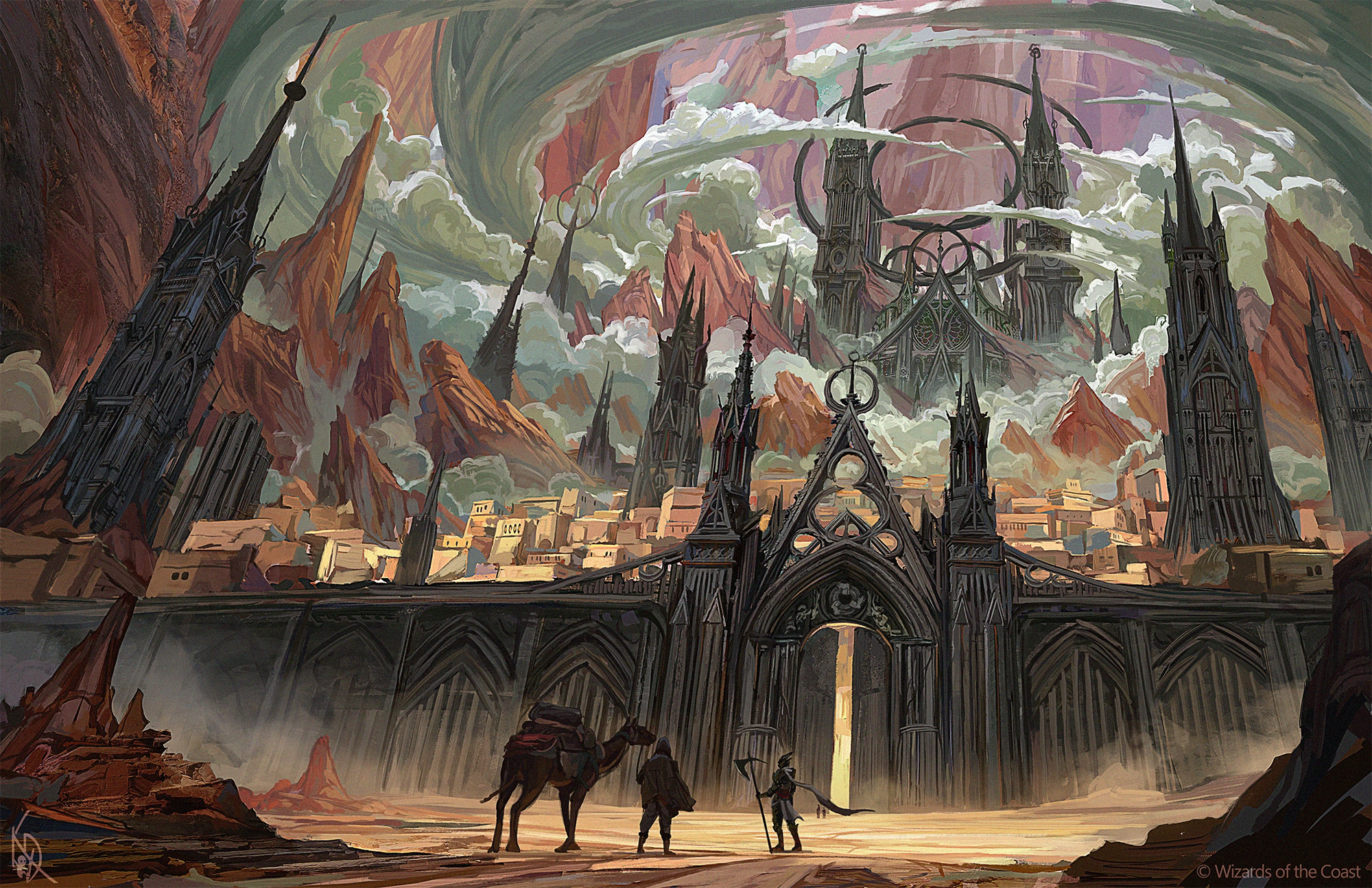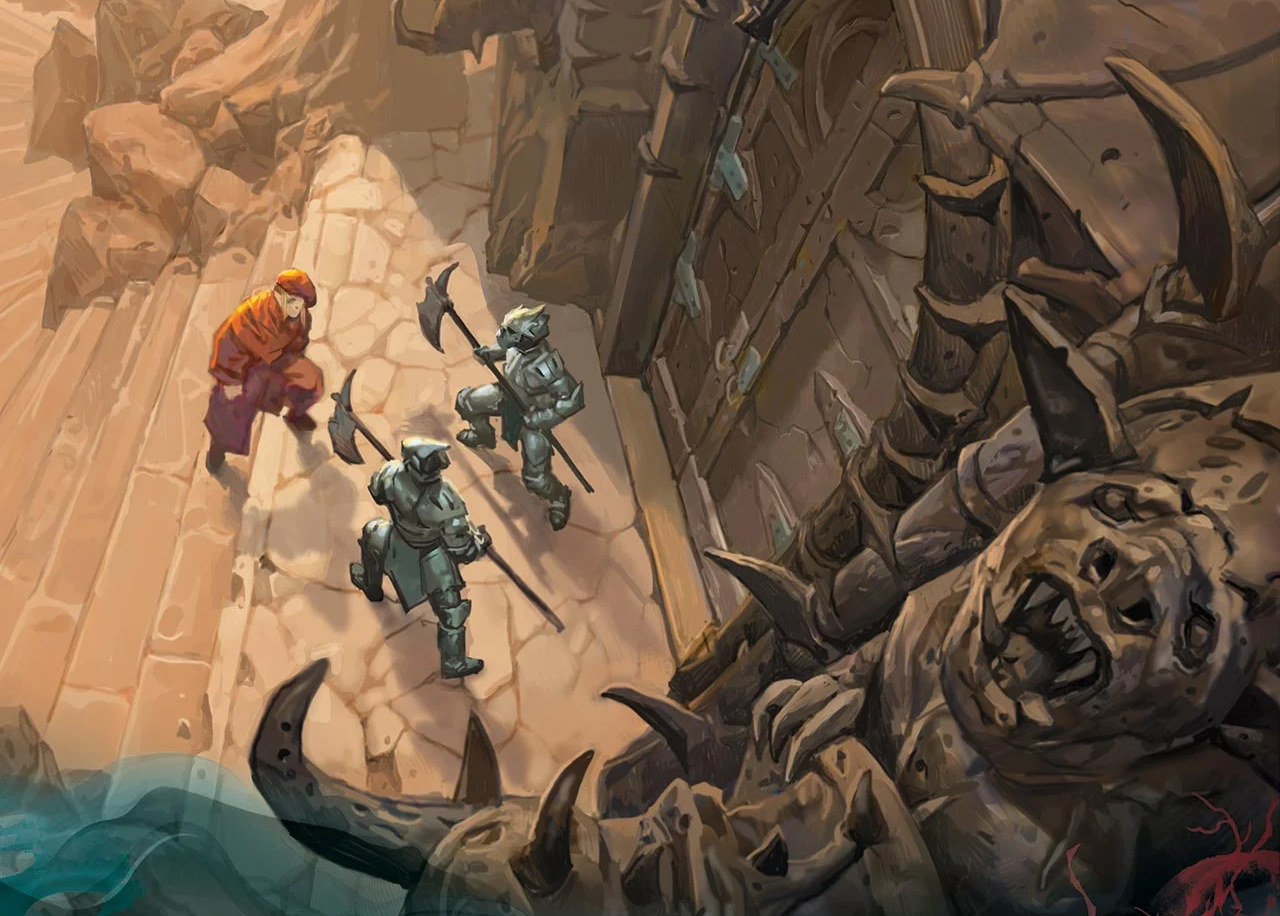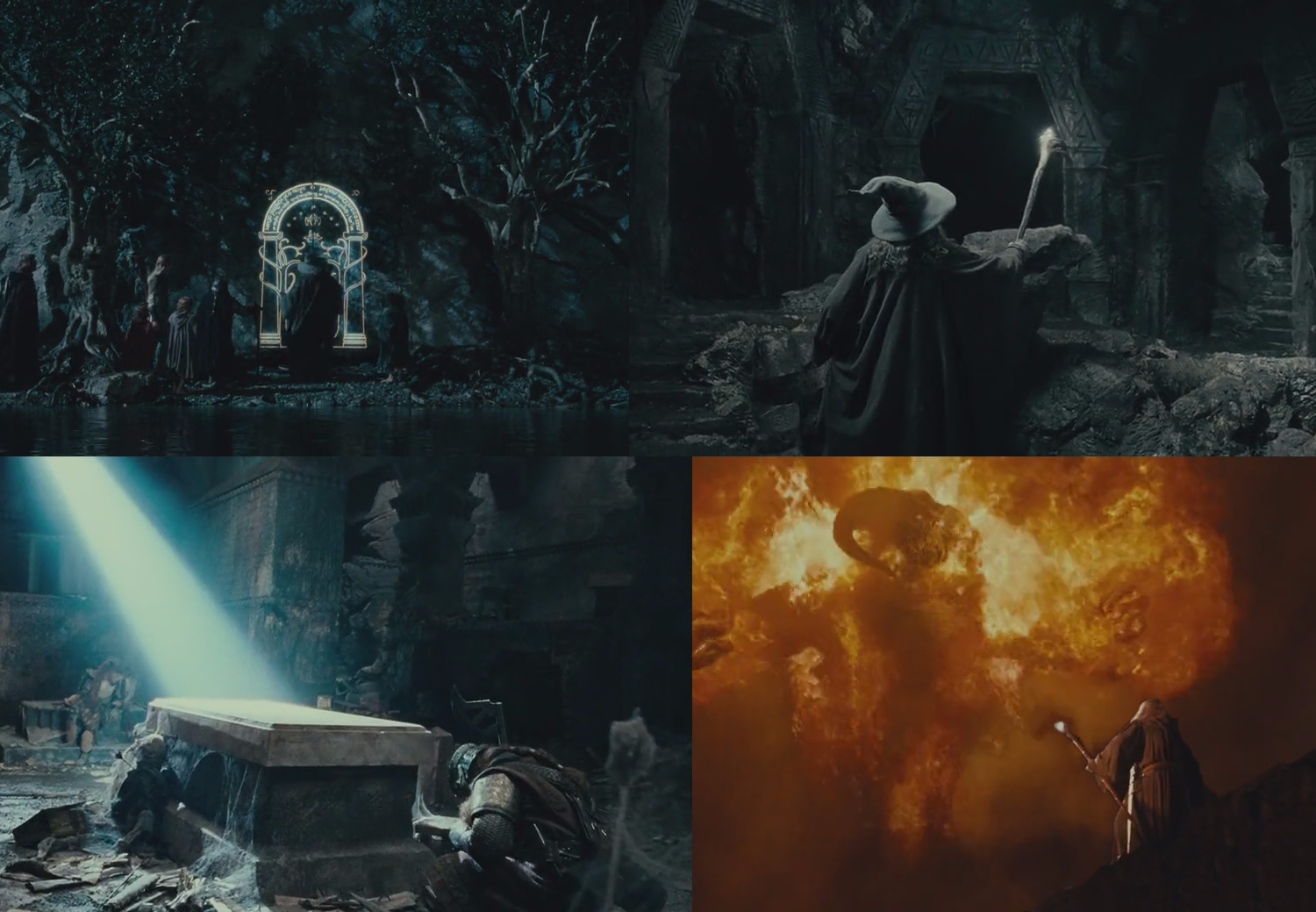In the world of Exandria, in the city of Bazzoxan, there lies Betrayers’ Rise. Once a “dark temple instrumental to the machinations of the Betrayer Gods during the Calamity” (Explorer’s Guide to Wildemount), the Rise is a gargantuan complex worming its way into the earth; a place of vast, unexplored depths where explorers delved too deep and woke up abyssal horrors from an elder age, placing the people of Bazzoxan on the front lines of an ancient war.
As presented in the Call of the Netherdeep campaign, however, Betrayers’ Rise is a tiny little dungeon with just sixteen rooms.
They’re good rooms. Great rooms, even.
But it doesn’t quite deliver the experience promised by the lore.
THE PROBLEM
To be fair, Call of the Netherdeep knows it has a problem. The writers kind of toss out the idea that “the characters experience a particular version” of Betrayers’ Rise, and that others experience “different configurations” of the dungeon. They also provide “Betrayers’ Rise Encounters” (p. 63) that can be used as inspiration to “expand” the Rise.
And this is not actually an unusual problem: You want to send the PCs into a legendary dungeon — Moria, Undermountain, Castle Blackmoor, Betrayers’ Rise — as part of a larger adventure. But these vast dungeons have dozens of levels and hundreds, possibly thousands, of rooms.
At that scale, in published adventures, page count becomes an issue. For another example of this, consider Ed Greenwood’s FRE3 Waterdeep module. Greenwood wanted to send the PCs through the well in the Yawning Portal and into Undermountain as part of this adventure, but obviously couldn’t include the entire dungeon (which usually requires hundreds of pages) in a 52-page adventure. (His solution was to create a previously unmentioned secret well in the Yawning Portal’s backroom that conveniently led directly to where the PCs needed to go.)
But even if page count or prep time weren’t important (which they obviously are), there’s also pacing to consider. Megadungeons are awesome. I love megadungeons. But it wouldn’t make a lot of sense to put Call of the Netherdeep on hold for 10 or 20 or 40 sessions while a largely unrelated dungeon crawl is happening.
So what’s the problem?
If I’m saying that you can’t do a megadungeon in Call of the Netherdeep and that you shouldn’t do a megadungeon in Call of the Netherdeep, don’t we just have to accept that micro-dungeon that Call of the Netherdeep presents?
No, actually.
THE SOLUTION(S)
We’ve been hearing “vast underground complex” and we’ve been defaulting to “megadungeon” as the solution. The solution is to shift our paradigm, and we can do that by rephrasing our goal.
The micro-dungeon in Call of the Netherdeep is (a) good and (b) probably has about the right narrative weight for its role in the campaign. So what is it that we want?
Ideally, we’d take the exact same micro-dungeon and present it in a way that’s consistent with Betrayers’ Rise being a gargantuan complex with vast, unexplored depths where explorers delved too deep and yada yada yada.
OPTION 1: MULTIPLE ENTRANCES
Instead of Betrayers’ Rise having a single entrance that leads to a sixteen room micro-dungeon, the Rise has multiple entrances leading to a convoluted honeycomb of many different dungeon complexes. Some of these are small; some are vast. Some are connected to each other; others are not… or, if they are, the ways are secret, blocked, or only accessible through interdimensional spaces.
One of these entrances, of course, leads to our micro-dungeon.
The key question now is, how do the PCs know to use this specific entrance?
To answer this question, we simply step back and look at the PCs’ goal in Bazzoxan: They’re here to get answers about the Jewel of Three Prayers, the enigmatic Vestige of Divergence which has come into either their possession or the possession of their Rivals.
Therefore, this entrance must have a specific connection to the Jewel of Three Prayers.
There are many ways you could create his connection, but you can keep it quite simple: There’s a giant drawing or bas relief of the Jewel depicted on the entrance or near the entrance or just inside the entrance.
The next question is: How do the PCs learn about this connection?
This revelation is essential for the adventure, so we want to use the Three Clue Rule here. In fact, there are two closely related revelations here.
REVELATION 1: WE HAVE TO GO TO BAZZOXAN.
- The Elder in Jigow who told them to go to Bazzoxan (p. 37) should tell them: “I was in Bazzoxan once, where the legacy of the Calamity lingers more strongly anywhere else in Xhorhas, and I saw this very Jewel depicted on the walls of the Betrayers’ Rise. Perhaps you will find answers there.”
- The PCs can discover references to this depiction of the Jewel at Betrayers’ Rise through their own research.
- The Rivals will conduct their own research (or perhaps seek the casting of a legend lore spell) and discover the Jewel’s depiction at Betrayers’ Rise. They’ll then inform the PCs, ask for the PCs’ help, or the PCs can pursue them there.
REVELATION 2: THE LOCATION OF THE JEWEL’S DEPICTION.
- The PCs can do their own survey of the Rise’s exterior to find the depiction.
- The Three Scholars of Ank’Harel in Bazzoxan (Question, Prolix, and Aloysia) are all here researching ruidium (which is specifically found around this entrance and in this micro-dungeon). They can be questioned and their notes also include depictions of the Jewel.
Design Note: This conveniently also addresses some other structural weaknesses in Call of the Netherdeep. For example, in the adventure as written the Elder doesn’t actually give the PCs’ a reason to go to Bazzoxan; so when they arrive, they end up just kind of wandering around hoping to bump into the plot. By having the Elder give them this specific connection to Bazzoxan, the PCs now arrive in town with a specific agenda which will drive the action forward.
You could also further develop this lore to strengthen connections between Bazzoxan and Ank’Harel. Perhaps the excavations in the sunken city of Cael Morrow have recently discovered a depiction of the Jewel of Three Prayers, and some or all of the scholarly factions have independently discovered its depiction in Bazzoxan (providing an alternative or additional motive to ruidium for coming here).
OPTION 2: THE POINTCRAWL
If you want to actually delve into the “true” Betrayers’ Rise — that vast, unexplored depth which yada yada yada — then what you need is a pointcrawl.
A pointcrawl adventure uses a point-map to represent navigation at an abstract level. One way of understanding a pointcrawl, and its original application, is modeling travel along a trail system (i.e., the connections between points are literally wilderness trails running between the locations).
In the case of a dungeon pointcrawl, like the one we would use for Betrayers’ Rise, the points represent notable locations or regions within the dungeon and the connections between them model the navigational connections between them. Because these navigation connections are being represented at a high level of abstraction, they are often not specific. (There might be several different passages you can take from the Low Halls to the High Throne, but they’d all be represented by a single line. This is similar to how there are many streets you could take while driving across town from McDonald’s to the Museum of Natural History, but they’ll all be heading in basically the same direction.)
Let’s make this less abstract. The way a dungeon pointcrawl would work here is that the vast depths of Betrayers’ Rise would be abstracted. You’d narrate large spans of the journey as a sort of travelogue through terrifying-yet-empty vaults.
The Rise is not a beehive with every inch filled by demons. It is a wasteland.
If you want a touchstone for what this would look like/sound like in actual play, consider the journey through Moria in The Lord of the Rings:
For eight dark hours, not counting two brief halts, they marched on; and they met not danger, and heard nothing, and saw nothing but the faint gleam of the wizard’s light, bobbing like a will-o’-wisp in front of them. The passage they had chosen wound steadily upwards. As far as they could judge it went in great mounting curves, and as it rose it grew loftier and wider. There were now no openings to other galleries or tunnels on either side, and the floor was level and sound, without pits or cracks. Evidently they had struck what once had been an important road; and they went forward quicker than they had done on their first march.
They had marched as far as the hobbits could endure without a rest, and all were thinking of a place where they could sleep, when suddenly the walls to right and left vanished. They seem to have passed through some arched doorway into a black and empty space. There was a great draught of warmer air behind them, and before them the darkness was cold on their faces. They halted and crowded anxiously together.
Gandalf seemed pleased. ‘I chose the right way,’ he said. ‘At last we are coming to the habitable parts, and I guess that we are not far now from the eastern side. But we are high up, a good deal higher than the Dimrill Gate, unless I am mistaken. From the feeling of the air, we must be in a wide hall. I will now risk a little real light.’
He raised his staff, and for a brief instant there was a blaze like a flash of lightning. Great shadows sprang up and fled, and for a second they saw a vast roof far above their heads upheld by many mighty pillars hewn of stone. Before them and on either side stretched a huge empty hall; its black walls, polished and smooth as glass, flashed and glittered. Three other entrances they saw, dark black arches: one straight before them eastwards, and one to either side.
Then the light went out.
The “points” of the pointcrawl would be points of particular interest/danger. They’d also represent key navigational choices. In the movie version of Moria, for example, these are:
- the Entrance;
- “I have no memory of this place”;
- Balin’s Tomb; and
- the Bridge of Khazad-dûm
In designing this for an RPG, you would need to include options for the paths Gandalf didn’t take (so that the players would have navigational choices).
PREPPING THE POINTCRAWL: Unlike Option 1, therefore, this option would require significantly more prep, because you’ll need to create other points within Betrayers’ Rise in addition to the original micro-dungeon (which I’m going to call the Cyst of Avandra).
My guess is that you’d want at least a half dozen points that are actually micro-dungeons. (You could think of each of these as a 5-Room Dungeon.) And then you’d probably want another dozen or so points that are just individual rooms or cool landmarks (a statue, a strange chasm, a subterranean bridge, etc.).
Some of these points might be better thought of as entire regions, out of which navigational choices can be made.
“You’re in the Hex Pits. You see a number of stairs winding down. Or you could perhaps try to make your way up one of the great ramps at either end of the Pits.”
OPTION 3: THE GUIDE
If we consider Gandalf an NPC instead of a PC, then we can get some of the atmosphere offered by the pointcrawl, but wrap it in a simple package (with near-zero prep) by simply requiring the PCs to have a guide.
What guide? One of the Three Scholars, of course.
And how do they know where to take the PCs? Once again, it’s the depiction of the Jewel of Three Prayers. Rather than being an entrance to Betrayers’ Rise, the painting or bas relief of the Jewel is located deep within the Rise.
The chosen scholar(s) can guide the PCs there in abstract time (a montage of moments as they delve into the dungeon; just like the hobbits’ experience in Moria), perhaps triggering a few “random” (actually scripted) encounters along the way.
When the PCs arrive at the depiction of the Jewel, you simply shift to now time as they come to the entrance of Cyst of Avandra.
Design Note: You could enrich this interaction a bit by having the Three Scholars each propose/take differing routes through the Rise. But there’s probably not a huge gain from this unless the PCs can make some sort of meaningful choice between route options.
The PCs could also avoid the need for an actual guide if, for example, they steal one of the researchers’ notes from their rooms. (Allowing them to study the notes and guide themselves.) You can prompt this as an active premise by having one of the scholars ask the PCs to steal a rival’s notes. (Prolix might do so in order to figure out what Aloysia is doing in Bazzoxan, for example.)
For the encounters studded along the route, you can use (or at least start with) the “Betrayers’ Rise Encounters” on p. 63 of Call of the Netherdeep. Try to have these encounters really reflect the vastness of the spaces through which the PCs are traveling, however: They pass through a galley looking out over a vast underground chasm or chamber, lit by the ruddy light of a lake of fire on the far end. In the center of the lake is an island upon which is a slab of stone. And upon the slab of stone there lies a sleeping balor.
Best not to rouse it.
FURTHER READING
Call of the Netherdeep: Running the Rivals














